Cashmere fabric is considered the royal wool due to its rarity and unique properties: the material is especially thin and delicate, while warm and cozy even in appearance.
Hypoallergenic luxurious wool is used to sew basic wardrobe, underwear and children's clothing. We tell in the article in detail: what kind of material is cashmere and what you need to know about it.
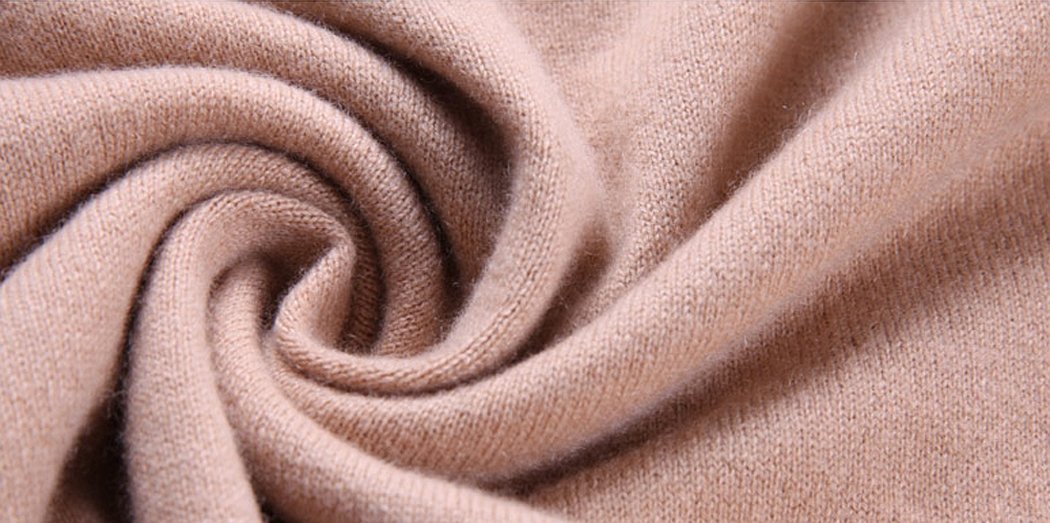
- What is cashmere and how is it made?
- Origin and history
- Properties and features of cashmere fabric
- Does cashmere pill?
- Varieties
- Coat fabric
- Eco-cashmere
- Mongolian
- Are pashmina and cashmere the same thing?
- Application of the material
- How to distinguish real cashmere from a synthetic fake
- Why is cashmere so faded?
- Features of care for cashmere products
- How to wash, clean and iron a coat?
- How to care for pellets
- Why do prices for cashmere items differ by 5-10 times?
- Advantages and disadvantages
- Reviews
What is cashmere and how is it made?
Cashmere fabric, or pashmina, is an expensive material made from the undercoat of mountain goats. It is particularly soft and gentle, while remaining warm, like other types of wool.
The material is produced strictly by hand, since the fine, delicate fibers are extremely valuable and require careful handling. The goats are combed once a year, in the spring, producing about 200 grams of light fluff from one animal.
After this, the wool is processed, which reduces the volume of the material by half, and the output is a thin yarn, from which cashmere is made. It is the fineness and labor intensity of the process, as well as the rarity of the raw material, that elevate the fabric to the rank of one of the most expensive in the world.
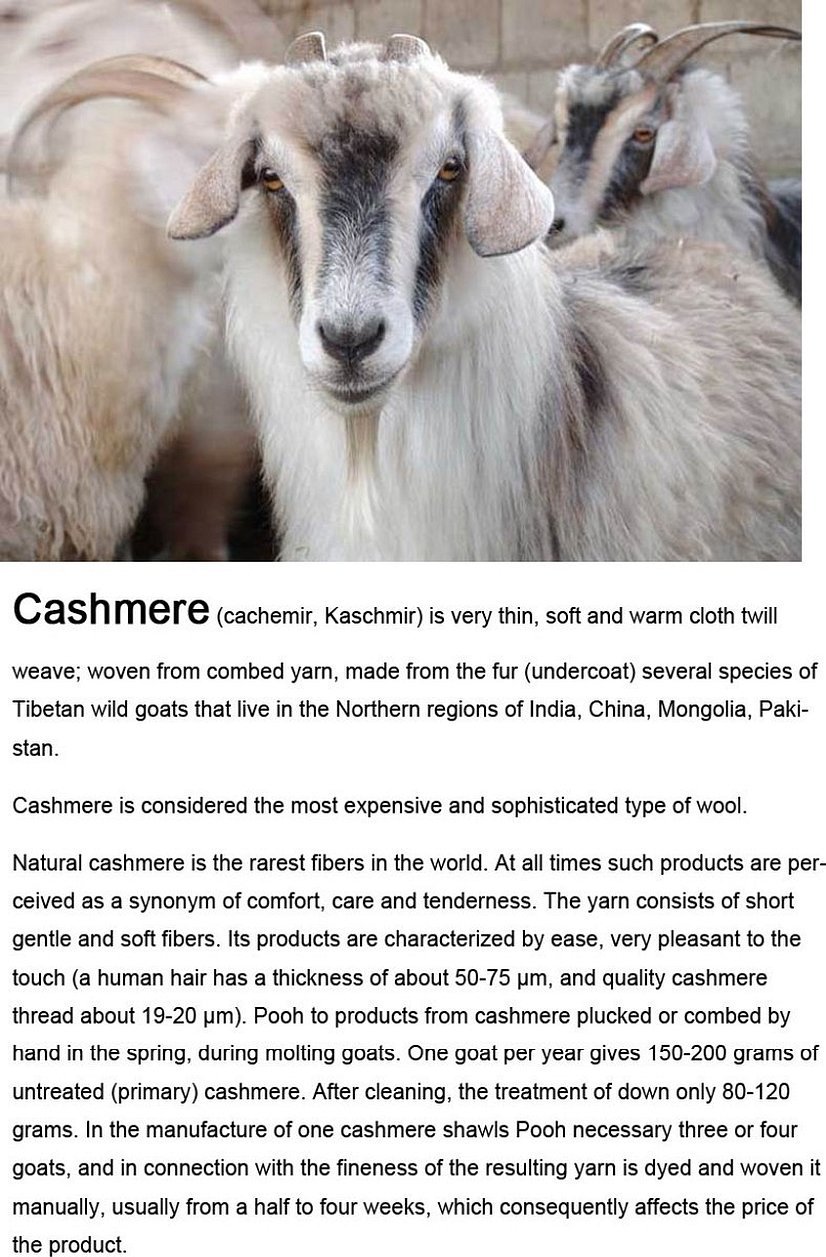
Origin and history
The characteristics of the pile used to make natural cashmere are determined by the specific climate of the Himalayan Mountains. Goats that produce valuable undercoat are bred only in India, Pakistan, Mongolia, China and Nepal. The name of the fabric comes from the province of the same name - Kashmir - located on the border of India and Pakistan.

The valuable properties of mountain wool were noticed by the inhabitants of the Himalayan regions back in the 16th century, when they realized that thin and light things that could be made from goat hair warm perfectly even at very low temperatures.
Later, European colonizers learned what cashmere was, its composition (what the fabric consists of) and brought expensive products to the Old World, where cashmere immediately took its place on the shoulders of aristocratic persons.
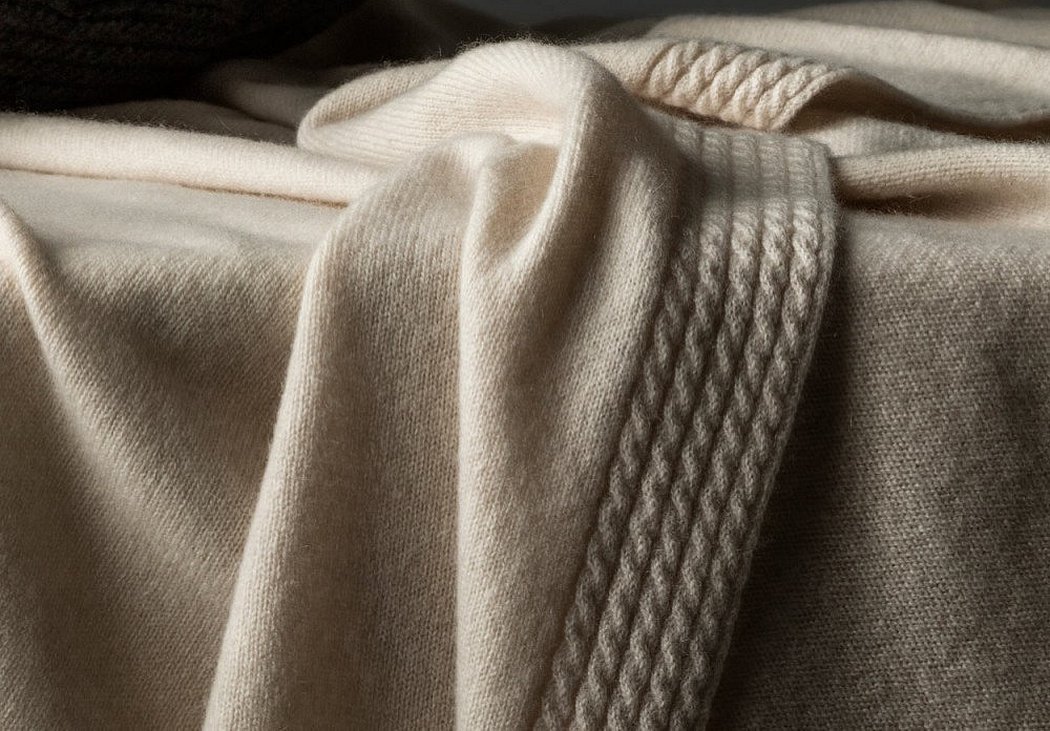
Properties and features of cashmere fabric
Cashmere is the thinnest woolen fabric in the world, it is often used to make not only thick scarves, but also flowing stoles. Such a product can easily be passed through the gap of a ring. The material also has other distinctive qualities:
- Lightness. Even cashmere coats do not weigh down women's and children's shoulders.
- Durability and wear resistance. Cashmere lasts a long time without losing its shape or valuable properties.
- Thermal protection. The fabric warms well, holding a small air cushion, and also pleasantly massages the skin.
- Beautiful matte surface and smooth texture. Cashmere is elastic, dense, neat and elegant in appearance. Due to this, it is often used for sewing elegant warm clothes.
- Flexibility. Thin products fit the silhouette nicely, without creating hard folds and creases and without causing discomfort. Pashmina items do not wrinkle and, with careful care, do not stretch.
Please note! A special feature of natural cashmere is its healing effect. According to research, the fabric has a positive effect on joints and the vascular system not only due to the micro-massage of the skin, but also due to the goat wax contained in the hairs.
It is advisable to protect the fabric from pungent odors, aggressive chemicals and moths.
Does cashmere pill?
Natural cashmere is characterized by increased strength and smoothness, and the structure of the soft pile is such that the products do not roll. Synthetic items have this tendency, so if the product contains artificial additives, it may well become covered with small knots over time. By whether the purchased cashmere rolls, you can determine whether the item is really made of elite material.
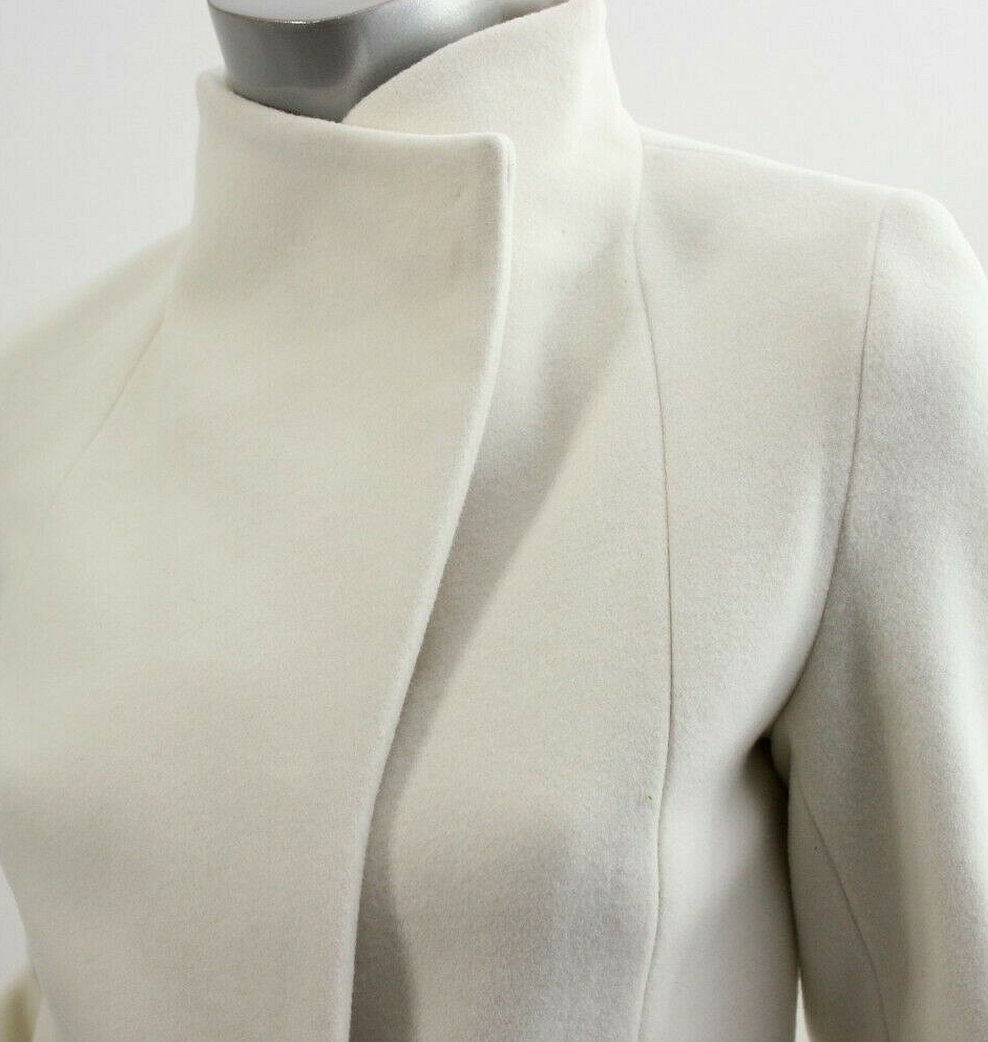
Varieties
The beautiful word associated with luxury can mean several types of fabric:
Coat fabric
Cashmere is used for sewing outerwear, supplemented with other types of wool, such as alpaca. Finished products consist of only a third of the down component, but thanks to this they become very soft and warm. Additional fibers help protect the fabric from getting wet.
Eco-cashmere
Under the deceptive name with the "pure" prefix hides a synthetic fabric that looks exactly like natural cashmere. Along with the advantages - reduced cost and a pleasant appearance - it also has several disadvantages: it warms less and stretches over time, changing the shape of the products.
Please note! Less often, this name can be used to refer to 100% products made from unpainted natural material, presented in the premium segment.

Mongolian
Mongolian is the name given to hand-made cashmere from the provinces of China and Mongolia. The raw material is processed with special care, and the result is durable and particularly strong items that do not lose their shape even after many washes.
Are pashmina and cashmere the same thing?
As a rule, pashmina is the raw material from which the fabric is made, and cashmere is the finished luxurious material. But these words can be considered synonyms and understood as both the undercoat of Himalayan goats and all products made from delicate fabric collectively.
The Europeans began to call the fabric cashmere, since it became legendary and recognizable, and its peculiarity was the place where the rare wool was mined. The raw material was called pashmina in its homeland, so both names stuck on people's lips.
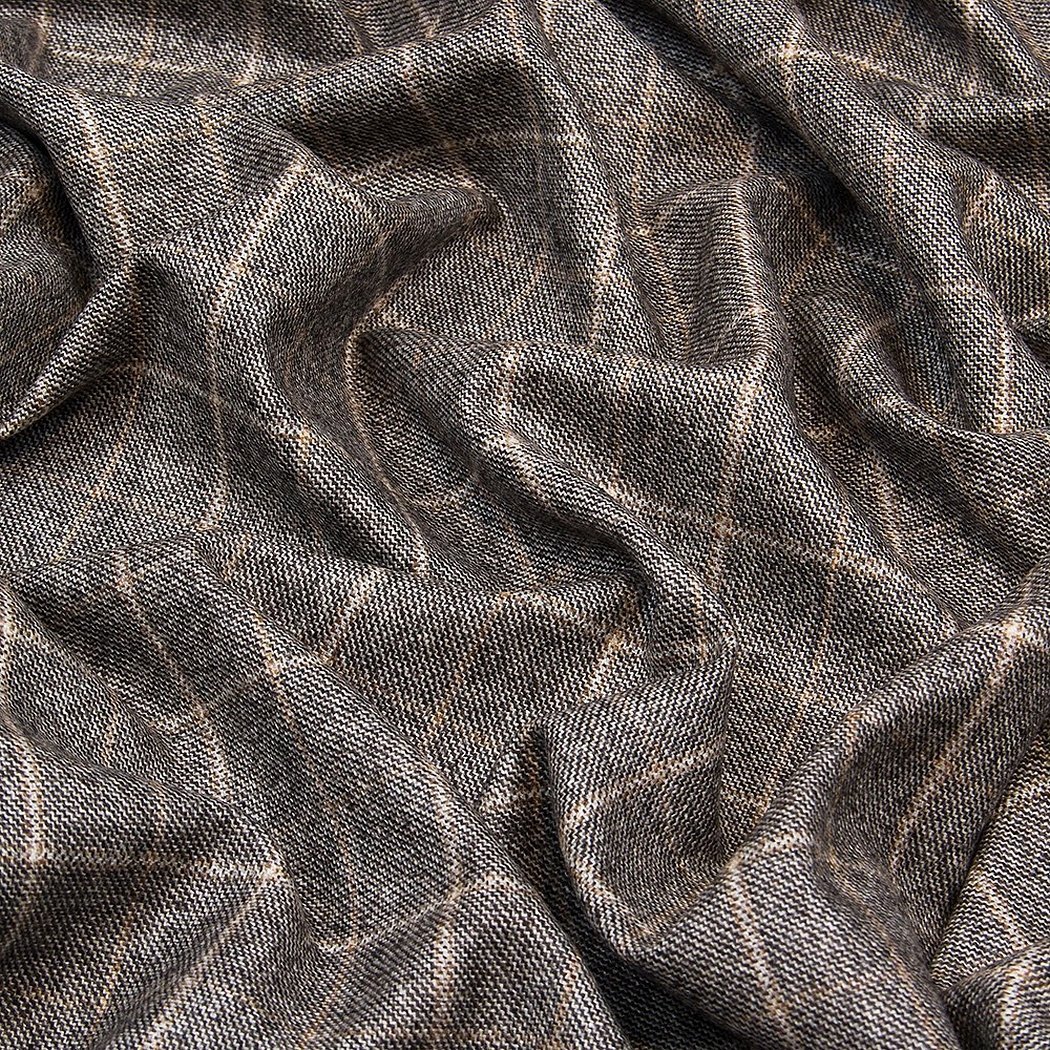
Application of the material
Although the most famous cashmere products that have conquered the world are light coats and bright stoles, painted in oriental style, many more varieties of things are made from the rare material:
- bedspreads;
- scarves and shawls;
- socks and winter underwear;
- gloves, accessories and outerwear;
- sweaters, turtlenecks, vests and blouses;
- skirts, trousers and suits;
- children's clothing;
- dresses and many other products.
Please note! Fine wool allows for the creation of delicate and sophisticated items that fit the figure and do not create any discomfort for the wearer.
Thanks to these unique properties, cashmere conquered all of Europe in the middle of the last millennium; luxurious outfits and bedding were made from it.
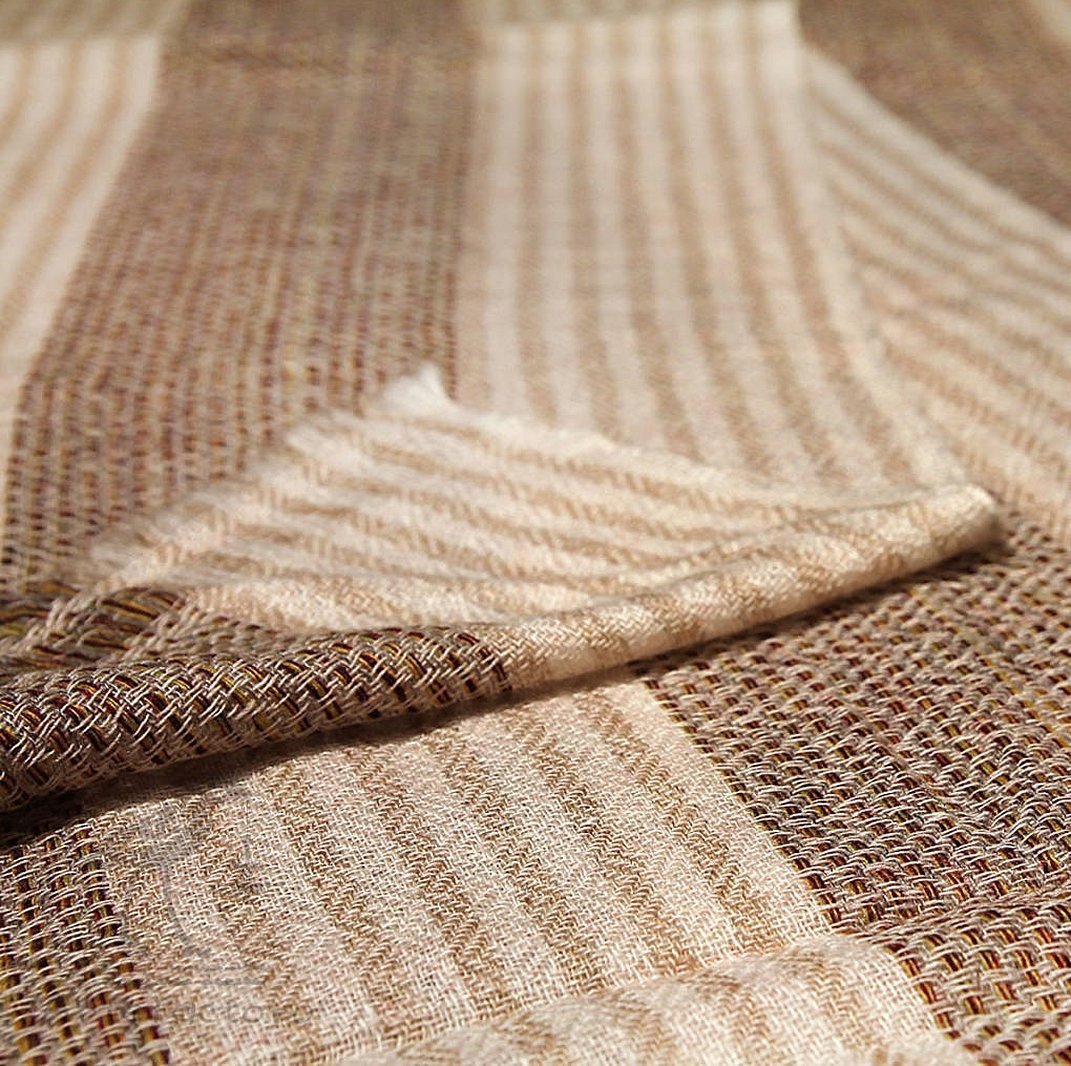
How to distinguish real cashmere from a synthetic fake
Often, under the guise of natural cashmere, products obtained in a similar way, but created from more affordable types of pile, are offered. The quality of such things may not be inferior to the original, so for many who want to show off in a luxurious product made of valuable material, buying a substitute becomes a profitable solution.
You can't always trust the description of the fabric composition on products, so you can determine whether the base is natural cashmere by the following signs:
- Real cashmere wool always has a light fluff on the surface, but synthetics will be much smoother.
- Artificial fibers have a characteristic squeak that does not occur with wool.
- Real fabric does not become electrified, which can be verified by rubbing it against a plastic surface and applying the item to your hair.
- When you pick up an item made of natural cashmere, you can feel a surge of warmth within a few seconds, whereas synthetic fabric creates a warming effect for much longer.
- Pashmina has a pleasant matte color, while artificial fibers usually give a slight shine and shimmer in the light.
- A radical way to check is by fire. Synthetics quickly begin to melt even from an approaching flame, and also emit a plastic smell.
Please note! In terms of fibers, faux cashmere is generally more resilient than the springy natural stuff. But knitted items can spring back due to the characteristics of the weave, not the yarn itself.
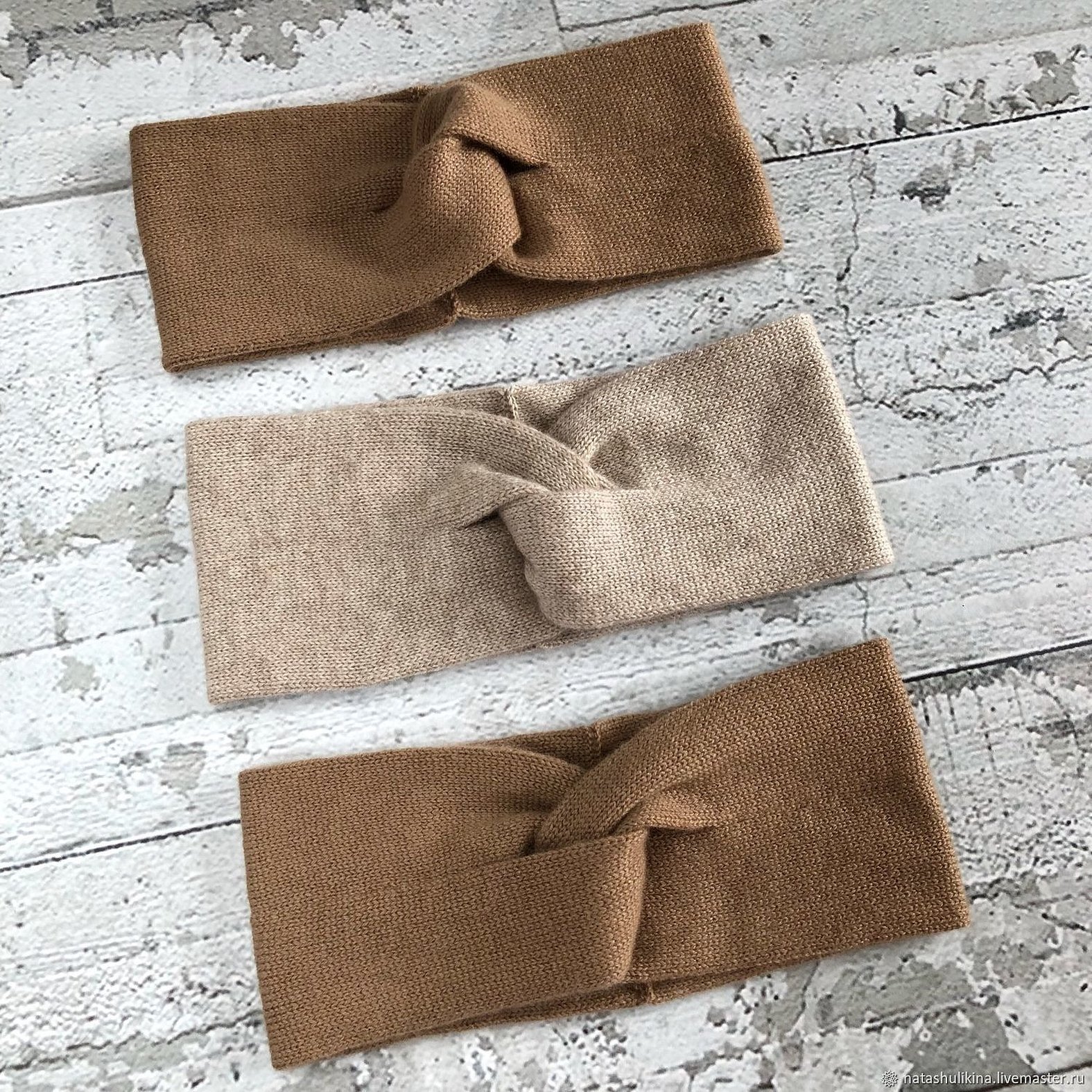
Why is cashmere so faded?
Completely natural cashmere is not treated with any dyes, so its palette corresponds to the color of mountain goats - from snow-white to brown-black shades. In order not to spoil the valuable raw material and preserve the useful properties of the fabric, the products are sold in their natural form.
Features of care for cashmere products
In order for expensive fabric to retain its valuable properties for a long time and remain neat and pleasant to the body, it is necessary to ensure proper care of cashmere items:
- wash the fabric only in cool water;
- Do not use rough spinning, including when machine washing;
- use gel detergents, avoiding abrasives;
- Dry washed items by carefully laying them out on a cotton cloth or net, do not hang them by the shoulders or other edges;
- do not wear clothes too long so that they do not absorb body and environmental odors;
- If smoothing is necessary, use steam devices without heating the product with an iron.
Please note! Cashmere should be protected from moths by choosing cedar cabinets and using scented underlays such as lavender.

How to wash, clean and iron a coat?
If you clean a cashmere coat at home, you need to carefully study the composition of the product. 100% cashmere is washed only by hand at a temperature of no more than 30 ° C without using coarse brushes and without wringing the fabric, so that the coat does not lose its shape. You can use a sponge and a mild detergent for wool.
Materials with synthetic additives can also be washed in the machine, choosing the most delicate mode without spinning. After washing, the coat is blotted with a clean towel and laid out to dry on the crossbars of a folding unit, on a table on top of the fabric, or on thick hangers so that the sleeves do not sag.

You can smooth out a coat by steaming, but it is better not to carry out such procedures at home, entrusting an expensive item to professionals.
How to care for pellets
Although natural cashmere items do not pill, similar items may become covered with pile knots over time. To remove them carefully, it is best to purchase a special device - a roller with a safe blade, which will remove all unwanted "relief" from the surface.
These tools are usually sold in cashmere boutiques, and are sometimes included as a gift with a purchase. You can also buy a roller in hardware and sewing stores.
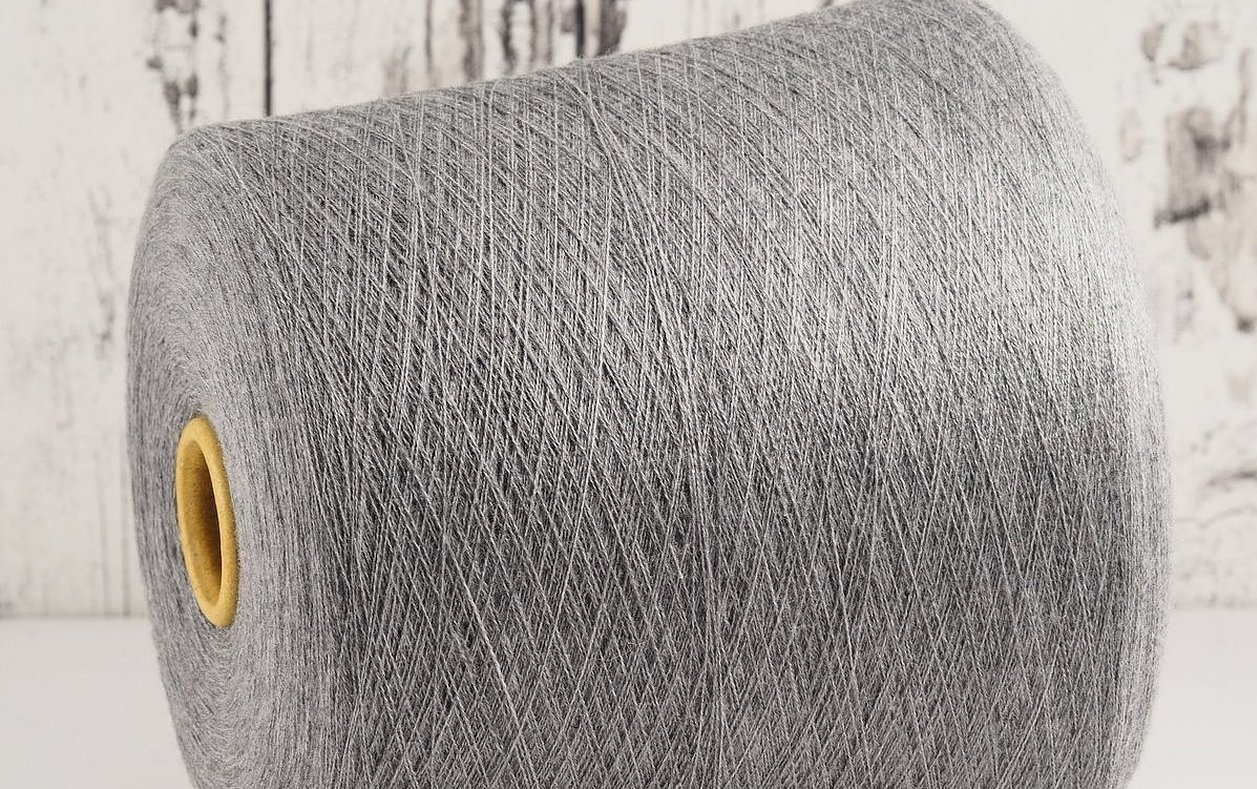
Why do prices for cashmere items differ by 5-10 times?
Natural cashmere items may vary in price. The cost of the product depends on the purity of the material and often on its color. If the label says cashmere, find out what kind of material it is and what impurities it contains.
100% pashmina is an undyed fabric of natural shades: white, milky, grayish, black. Sometimes the products are dyed, and sometimes colored wool or silk is added to cashmere, which reduces the cost of the item. Bright models are more affordable, while 100% ones are several times more expensive and are considered elite.
Synthetic fabrics will differ in price, so when you come across an inexpensive product, you need to think about what it is - eco-cashmere or woolen material. You can buy such a thing, but it will not have the full list of properties of pashmina.

Advantages and disadvantages
Having learned what cashmere is, it is easy to draw conclusions about its advantages over other types of wool:
- warm clothes can be thin, delicate and sophisticated;
- the fabric does not cause irritation like sheep's wool;
- mites do not live in goat hair, so cashmere is hypoallergenic;
- Cashmere is versatile and is even used in the production of children's underwear;
- the material keeps its shape for a long time during wear, does not roll or become electrified;
- If necessary, the raw material can be mixed with other convenient fibers.
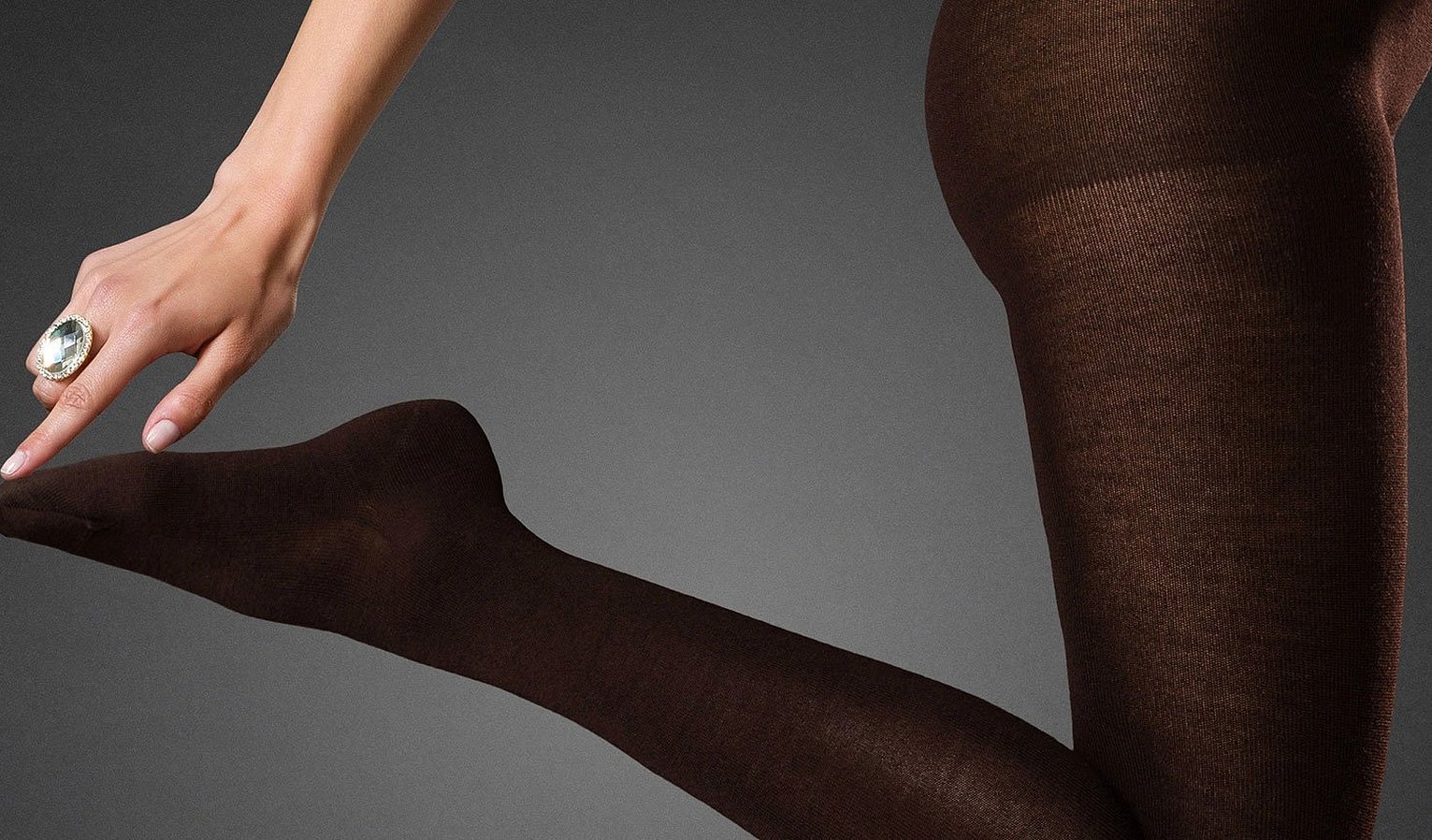
But even "royal wool" has its flaws:
- difficult to care for, it requires frequent washing;
- light-colored items get dirty easily;
- The price of products made from natural goat down is approaching the premium class.
Please note! In addition, descriptions of the composition of the fabric allow even products with a high proportion of synthetic fibers to be called cashmere. Therefore, before buying supplemented cashmere, find out what it is, what fibers are added to the composition. As a rule, expensive material is not mixed with low-grade synthetics.
Reviews
Yulia: “Once I saw a thin and very soft sweater, stylish and so effective, youthful. I was surprised, what kind of fabric is it - cashmere. It was very expensive, but I liked it so much that I bought it. And now it is 8 years old, and it still pleases - warm and refined, feminine, completely crossing out the idea that a sweater should be bulky.”
Oksana: "Once I was recommended cashmere gloves for winter for comfort. They explained that they do not hinder flexibility, are pleasant to the touch and warmer than all others. Having sensitive skin prone to allergies, I was afraid and asked: cashmere - whose wool is this? It turns out it is goat, which is practically harmless. So I bought beautiful gloves, and I am still happy."
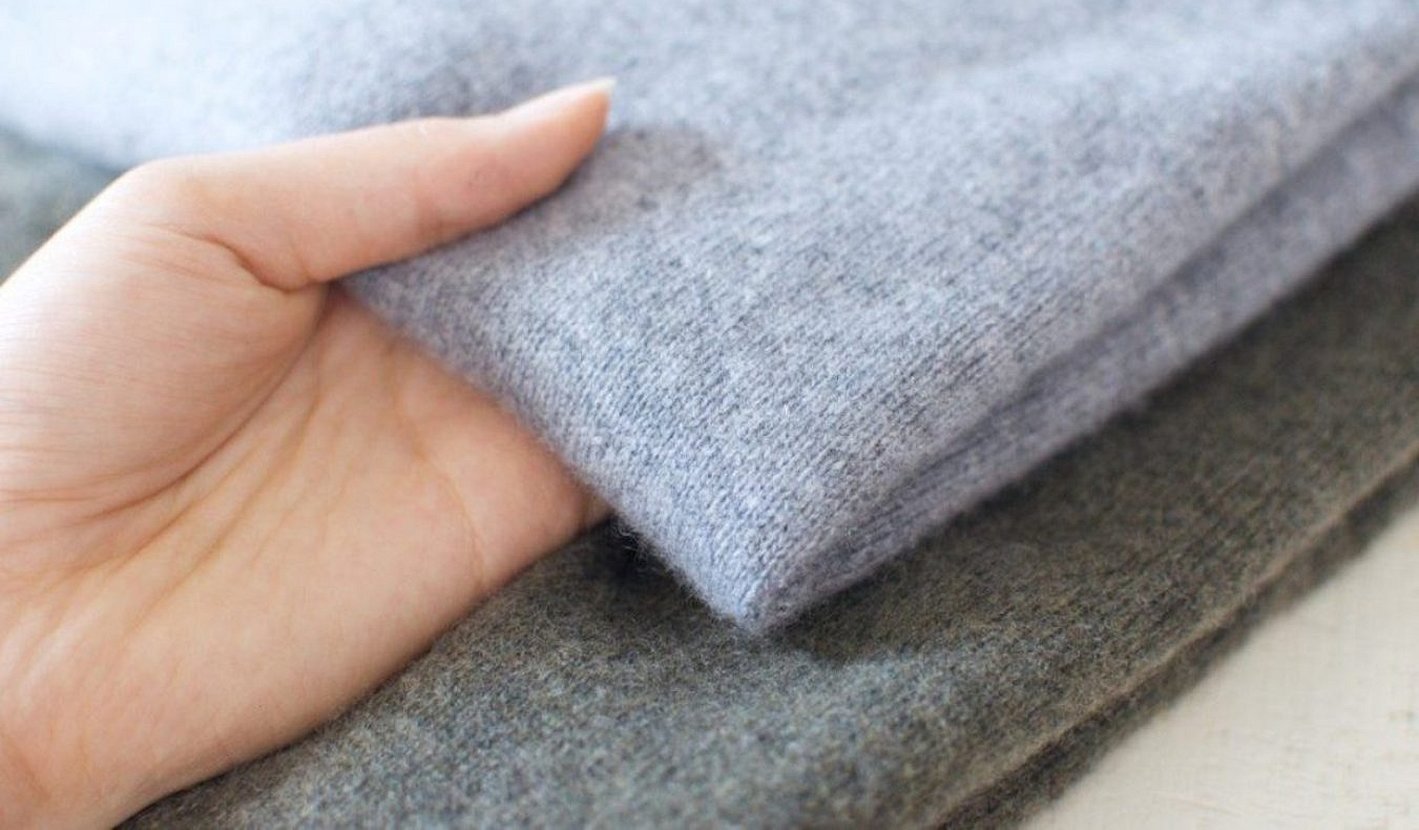
Anna Georgievna: "Our favorite things come to us unexpectedly. Once, our family was going to the theater, and I realized that it was not appropriate to go in a puffy jacket. We bought a coat made of Turkish cashmere. What a thing it is! It is thin, but very warm, I wear it even in frosty weather, even its appearance warms the soul. It fits perfectly and has not lost its shape over many years, even after cleaning."
Having learned more about cashmere and what it is, the desire to buy a cozy thing made of this pleasant fabric only increases. They say that elite items in the wardrobe bring good luck - perhaps a cashmere product will fill your life with new colors.




